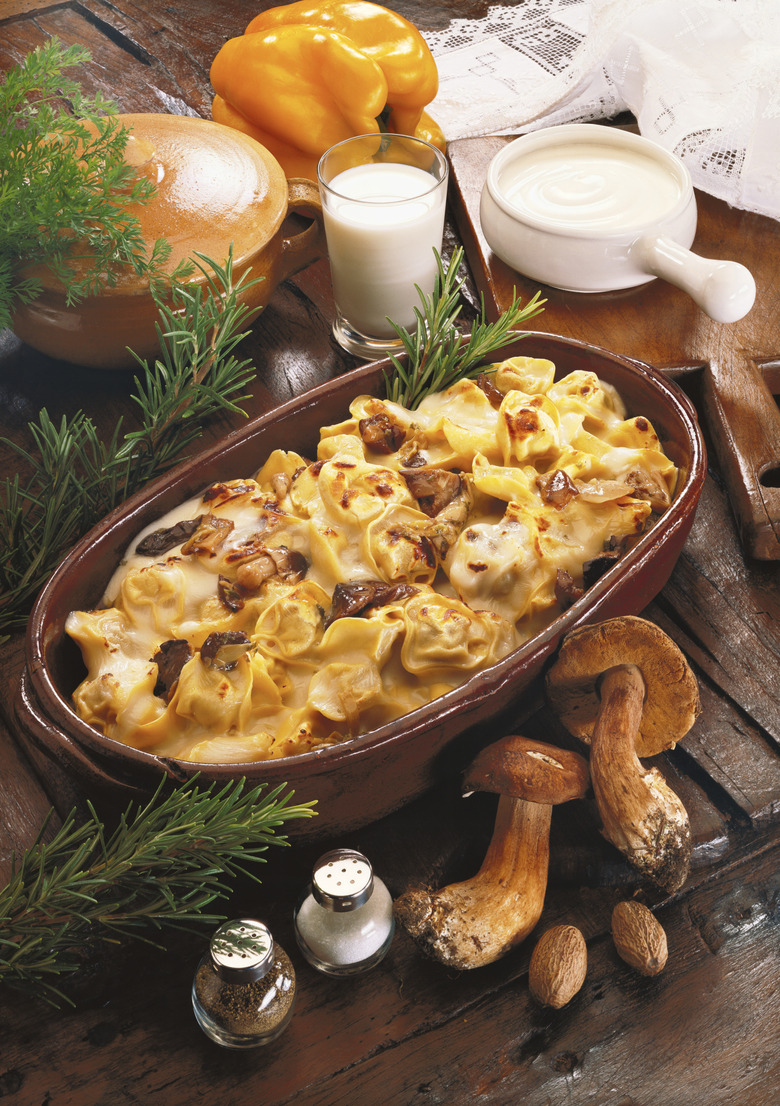Can You Put Corningware On A Glass Cooktop?
When CorningWare cookware was first introduced in the late 1950s, it was made of a new ceramic compound that was tolerant to extreme temperature fluctuations. CorningWare was recommended for use in ovens, as well as on cooktops. However, the ceramic formula was changed in the 1990s, and the new CorningWare was more fragile. Depending on the type of CorningWare you have, it may or may not be safe for use on cooktops.
Original CorningWare
Original CorningWare
The original CorningWare was made of pyroceramic glass that could be taken from freezer to oven and back without cracking or breaking. It was recommended for stovetop cooking on conventional and glass cooktops using low to medium temperatures, and for dishes that contained a significant amount of liquid. Since CorningWare holds heat so well, it could cook foods on lower temperatures, which saved energy. The first CorningWare dishes were also safe to use in conventional, toaster and convection ovens and under broiler units. However, the Pyrex lids are not safe for use under broilers or in toaster ovens.
New CorningWare
New CorningWare
In the 1990s, CorningWare's pyroceramic glass was replaced by a lighter ceramic material that was not nearly as tolerant to fluctuations in cold and heat. The updated version was also not recommended for use on conventional or glass cooktops or stovetops, grills, under broiler elements or to cook food in toaster ovens. Advantages of the new CorningWare variety were its lighter weight and plastic storage lids that sealed the dishes better for use in the freezer.
CorningWare Compromise
CorningWare Compromise
Since consumers were used to the durable CorningWare of years past, they continued to use the newer cookware in the same manner, which resulted in dishes exploding inside ovens and on countertops as they were exposed to extreme changes in temperature. When the company changed hands in the early 2000s, the new owners instantly responded to consumer outcries and started making CorningWare from the original pyroceramic glass.
Product Availability
Product Availability
Since the early 2000s, the only places to buy original varieties of CorningWare were garage sales, thrift stores and through online auction sites. However, since the change in ownership, all types of CorningWare are now also available at cookware shops and department stores. To avoid mishaps and get the best performance from your CorningWare, check the manufacturers' guidelines on the packaging to ensure you are buying the type that best fits your needs.
How to Tell Which CorningWare You Have
How to Tell Which CorningWare You Have
Particularly if you are purchasing CorningWare secondhand, it can be difficult to tell which variety of the cookware you have. The first CorningWare was made with an embossed stamp on its base. In many cases, it read "Pyroceram," as well. A stylized flame design was often used on these pieces to indicate that they were safe for cooktop use. Embossed stamps later changed to black or blue ink or halogen stamps, but continued to use the stylized flame and "Pyroceram" label until the late 1970s.
From the late 1970s through the late 1990s, a black-ink block stamp was used on the base of CorningWare pieces, and usually did not include the stylized flame design. In some cases, these cookware items did read "Range-Oven-Microwave" to let users know what was permitted with their crockery.
In the late 1990s through the early 2000s when CorningWare was being made of stone rather than Pyroceram, the cookware was often unglazed on the bottom. If you examine the base of your Corningware and it appears rough or dull, it is likely stoneware and should not be used on the stovetop. Many of these pieces include a warning to prevent cooktop use.
Brand-new CorningWare includes use instructions on its packaging and are typically stamped onto the piece itself. If you are unsure of how your CorningWare is to be used, you can send an image of the piece to the manufacturer. If all else fails, err on the side of caution and do not use your CorningWare on the stovetop.
